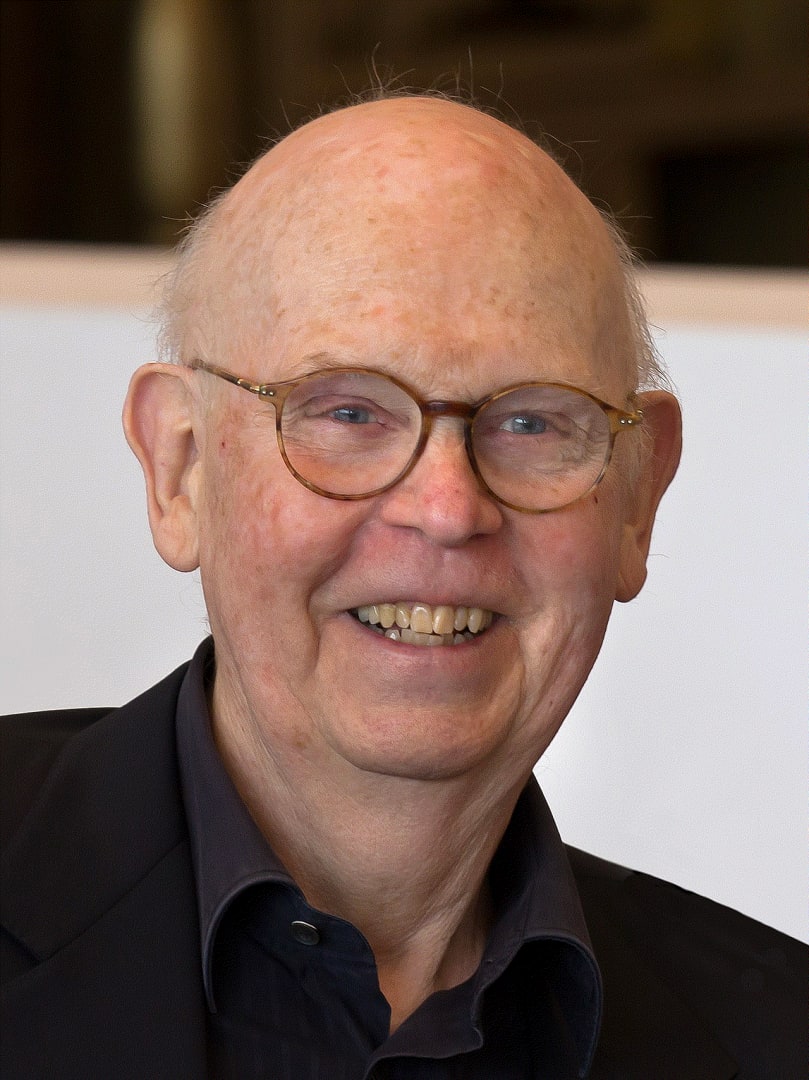Claes Oldenburg
We do invest religious emotion in our objects. Look at how beautifully objects are depicted in ads in Sunday newspapers. – Claes Oldenburg
Claes Oldenburg was one of America’s most innovate and influential artists, whose work is represented in every major museum around the world.
Claes Oldenburg was born in Stockholm in 1929. His father was a Swedish diplomat, who was appointed Consul General of Sweden in Chicago, where Oldenburg was raised.
Oldenburg attended the prestigious Latin School of Chicago, went on to study literature and art history at Yale and then returned to Chicago to study at the Art Institute. Oldenburg thought he might become a writer, and worked as a reporter at the City News Bureau of Chicago before deciding to focus on his art.
In 1953 Oldenburg became a U.S. citizen.
In 1956, Oldenburg moved to New York, at a time when many artists in New York were pushing back against abstract expressionism. Living in a cheap studio on the Lower East Side, Oldenburg collected materials, like cardboard, burlap and newspaper from the neighborhood, and created pieces that reflected the grit of the street.
Oldenburg met Tom Wesselman and other artists who took part in the Happenings staged by Oldenburg, and his first wife, Patty Mucha. The couple made soft sculptures and costumes that gained popularity when, in 1961 Oldenburg combined soft materials and enamel paint to create pieces that resembled consumer goods. He rented a space and displayed the work in a studio on East 2nd Street that he called The Store. Works from both The Street and The Store are still exhibited at MoMA and other venues worldwide.
Oldenburg moved to Los Angeles in 1963 and began to do renderings of fanciful, large scale monuments. He embraced the idea of objects taking on new meaning when presented as obelisks. One of his ideas was to create giant buildings, shaped like pool balls, which would circulate through Central Park, giving the occupants and neighbors varying views of the structures. Of course, all the trees in the park would have to be removed to accommodate his design.
His first gigantic public sculpture, Lipstick (Ascending) on Caterpillar Tracks was originally placed on the in Beinecke Plaza at Yale University and can now be seen at Morse College.
Because his imagined projects were on such a grand scale, Oldenberg took only public commissions. With his second wife, Coosje van Bruggen, Oldenberg created many iconic architectural sculptures, including Dropped Bowl with Scattered Slices and Peels, which was commissioned by the Metro Dade Art in Public Places Trust.
Oldenburg was awarded the National Medal of Arts in 2000 and became a member of the American Academy and Institute of Arts and Letters and the American Academy of Arts and Sciences.
Oldenburg’s sculpture Typewriter Eraser was sold for $2.2 million at Christie’s New York in 2009.
Oldenburg and van Bruggen were married for 32 years, until her death in 2009. Oldenburg’s older brother, Richard, was the director of MoMA from 1972 through 1993 and chairman of Sotheby’s America.
Claus Oldenburg died in at his home and studio in New York on July 18, 2022. He was 93.
-

Recent Acquisitions: Works by Tom Wesselmann
Picasso Exhibit Curated by Paloma Picasso May 1, 2025Tom Wesselmann (1931-2004) said that he wanted 'to make figurative art as exciting as abstract art.” He succeeded. Wesselmann began his career as a cartoonist...Read more -

New York Celebrating Fine Art Printmaking
March 26, 2025When we see a work of art by an artist whose style we know, we don’t have to look for the signature in the lower...Read more




